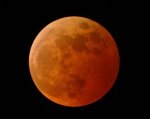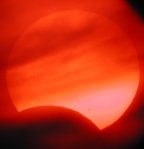Carol-Irene Southworth, a student in Professor B’s Solar System class at the University of California at San Diego, wrote and recorded the following song describing the phases of the Moon. If you want to play along, the chords are just C and F, in this case played on the ukulele (according to Woody Guthrie, “if you play more than two chords, you’re showing off”).
Listen here [4:18m]:
Download here [5.2 Mb]: http://pono.ucsd.edu/~adam/astrofacts/southworth_moonphasesong.mp3
Lyrics are below!
What’s the facts:
Over the course of roughly a month, the part of the Moon that is illuminated goes through a regular cycle of phases. Starting from dark new moon phase, the Moon gradually brightens, or waxes, through waxing crescent, first quarter, waxing gibbous and finally to a bright full moon phase 14 days later. The Moon then dims, or wanes, over the next 14 days, going through waning gibbous, third quarter, waning crescent and finally dark new moon again. This cycle is due to the relative orientation of the Sun, Moon and Earth, and the dark portions of the Moon are always caused by its own shadow shielding the Sun’s rays. New moon phase happens when the Sun, the Moon and the Earth are in a line, so that the far side of the Moon we can’t see is lit up. Full moon phase happens when the Sun, the Earth and the Moon are in a line, so we see the sunlit side of the Moon. The other phases occur in between these two alignments, which are also called syzygy.










